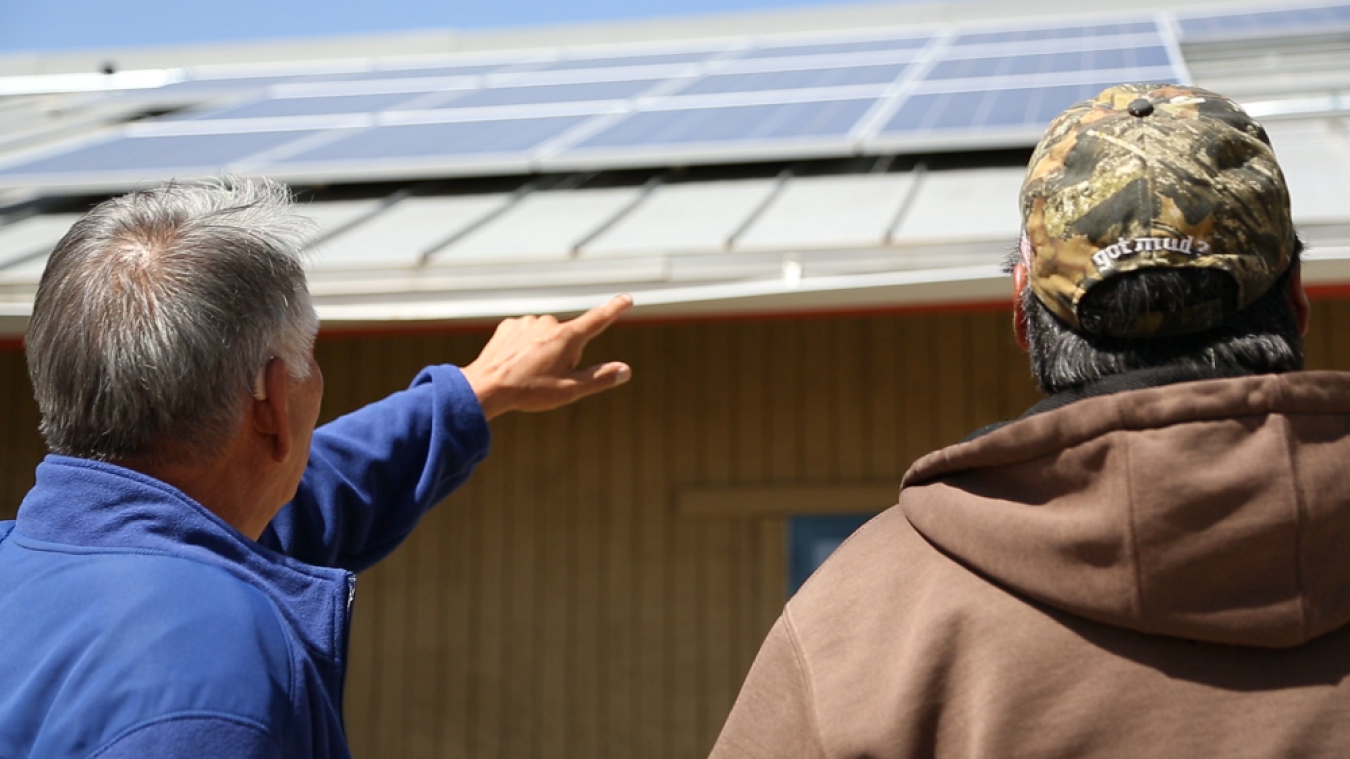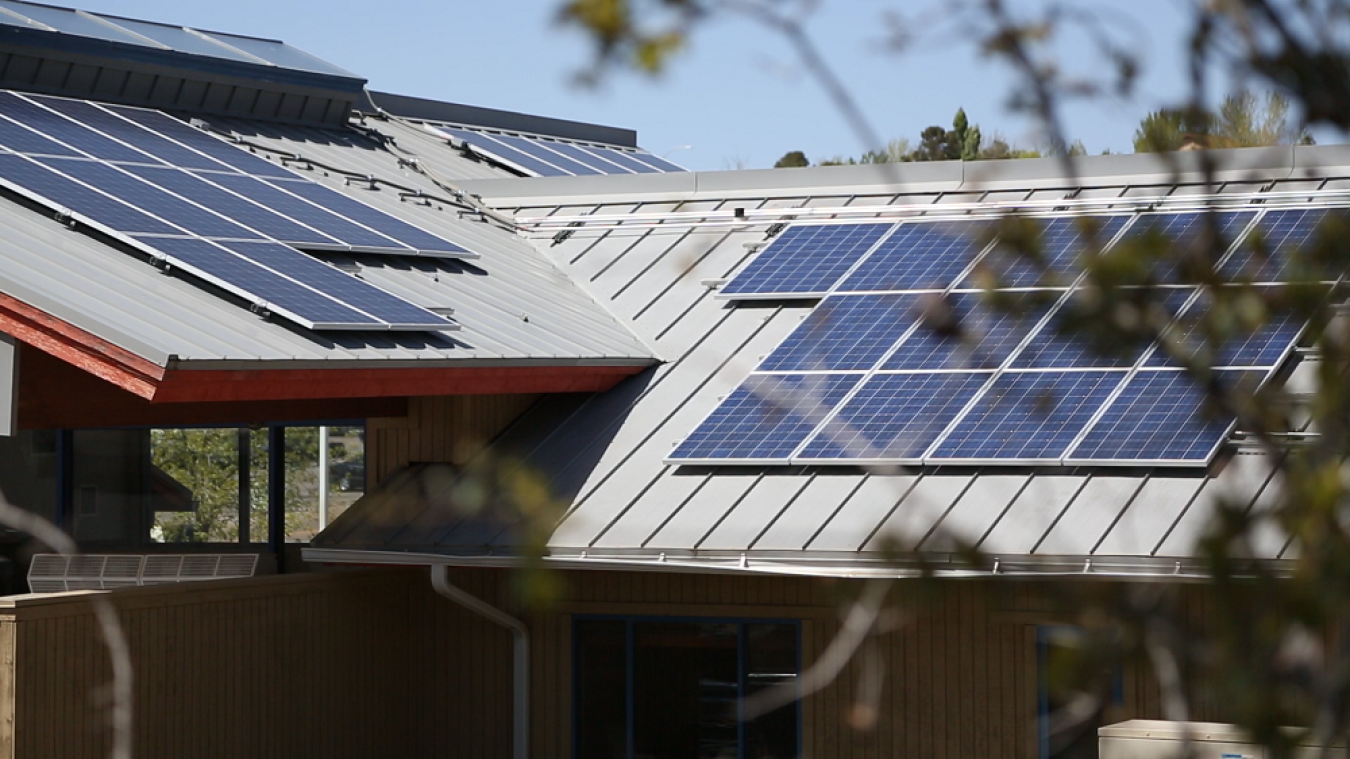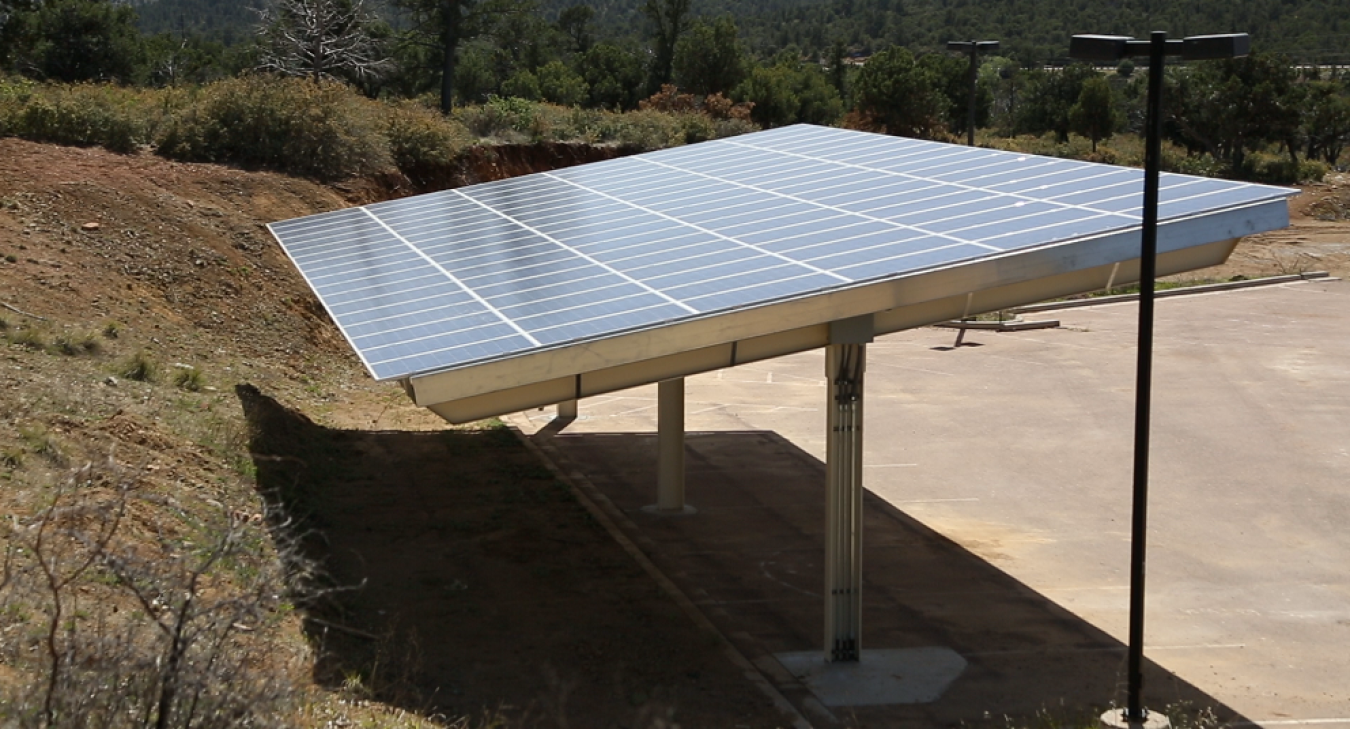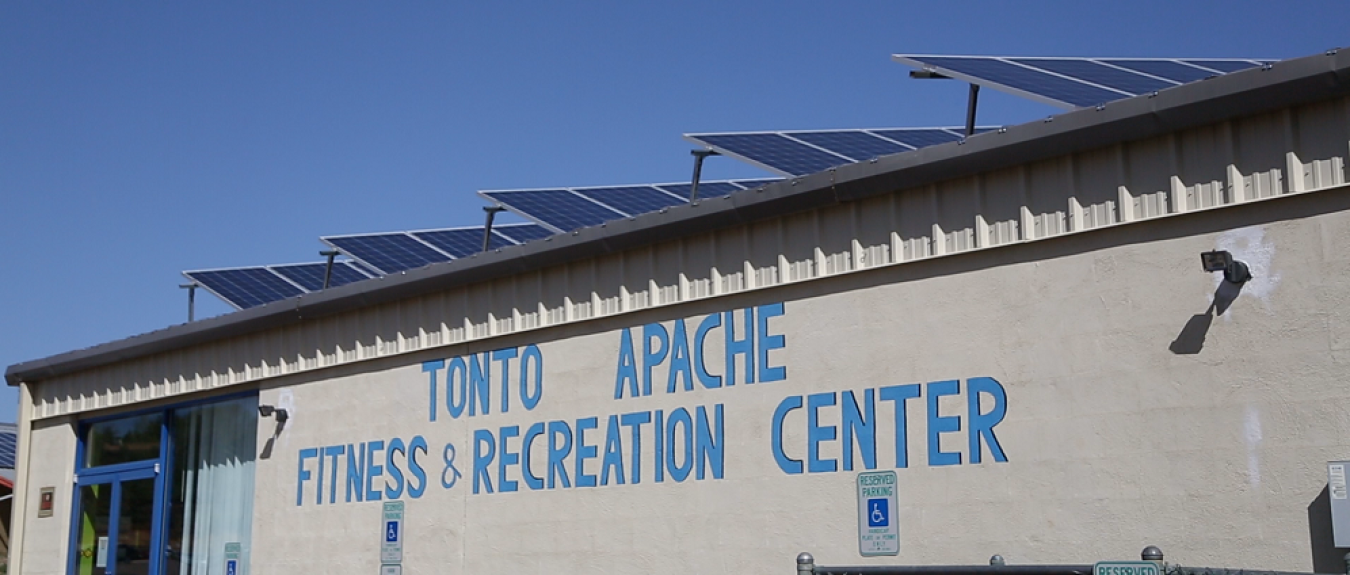The Tonto Apache Tribe in Payson, Arizona, undertook a decades-long reservation infrastructure development effort that is still ongoing.
Office of Indian Energy Policy and Programs
January 19, 2016
Photo by Deb Lastowka, NREL.
Intro/Background:

After federal recognition in 1972, the Tonto Apache Tribe in Payson, Arizona, situated about 90 miles northeast of Phoenix in the north-central part of the state, undertook a decades-long reservation infrastructure development effort that is still ongoing. In 2004, the small tribe was still actively looking for ways to fulfill its long-term vision, which is focused on sustainability and residential growth. Fortunately, they are located in a prime area for solar energy development—in fact, one of the best locations in the entire nation.
Challenge:

The Tonto Apache Tribe saw solar as a potential opportunity to contribute to environmental sustainability while reducing energy costs and freeing up funding for other tribal priorities. From a strategic perspective, the tribe was seeking ways to be self-sustaining and promote tribal sovereignty and self-determination, but more than that, to establish itself as a renewable energy leader in Indian Country while upholding traditional ways of life that honor and respect the earth. Conservation, best use, and least-negative impacts to the environment have long been tribal values.
“The tribe’s interest in renewable energy began with the knowledge that renewable energy could save significant tribal resources, that the use of renewable energy fit into the tribe’s overall view of development, and that we are situated in an area that is one of the best locations for use of solar energy in the entire nation,” said Joe Bresette, Grant Developer for the tribe. As it pursued options for solar energy development, the tribe faced a few constraints, including limited available land and financing challenges. Any proposed project would have to be affordable, demonstrate significant savings over the course of the project’s life, fit into available space, and be low-maintenance. Working closely with a contractor to develop a proposal for a facility-scale solar project that met these criteria, the tribe applied for a U.S. Department of Energy (DOE) grant to help fund the installation of solar photovoltaic (PV) systems.
Solution:

The project was competitively selected through the DOE Tribal Energy Program’s fiscal year 2013 funding opportunity announcement entitled “Community-Scale Clean Energy Projects in Indian Country” and started in April 2014. The Tonto Apache Tribe chose polycrystalline solar technology that was proven and came with an aggressive warranty, and then it worked with the contractor to install a combination of roof-mounted and solar-shade structure photovoltaic (PV) arrays for the administration building (75 kilowatts [kW]) and the gymnasium (192 kW). Together, these two buildings consumed the most energy and represented the greatest energy costs on the Tonto Apache Reservation. Tribal staff worked closely with the selected contractor throughout the project development process, building internal knowledge and capacity and a project-development framework that will serve as a blueprint for future alternative energy development on the reservation.
Without DOE help, we wouldn’t be enjoying the savings we are today. They provide great opportunity for funding…. I find it very exciting to help the community reduce their energy needs and I believe that this kind of project is great for any community.
Benefits:
- The PV systems are designed to offset 65% of the facilities’ electric load.
- The tribe anticipates saving an estimated $1.8 million in energy costs over the system’s projected lifespan of 30 years.
- In addition to providing temporary part-time employment for tribal members, the project also created one full-time job for a tribal member.
For more on this project, see the project summary and final report.
Based on the success of the project, the tribe applied for and was awarded funding for the installation of 249-kW solar PV system on the tribe’s Mazatzal Hotel. The hotel represents one of the largest energy consumers of the tribe's commercial enterprises on the Tonto Apache Indian Reservation, making it the ideal candidate for clean solar energy. By using proven solar PV technology in the Arizona climate, this system is projected to offset approximately 47% of total building annual energy usage. The solar PV system is projected to save the tribe $37,000 in the first year at current utility rates. With an average 3.5% utility rate escalation, the system is projected to save the tribe approximately $1.8 million over a 30-year period.
For more on the Tonto Apache Tribe's solar project and other tribal solar energy successes in the Southwest

